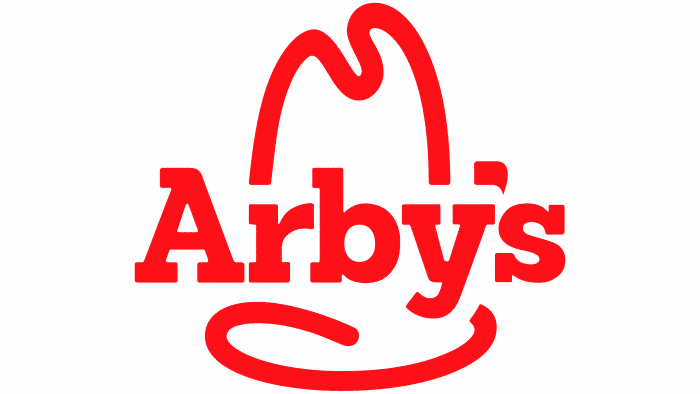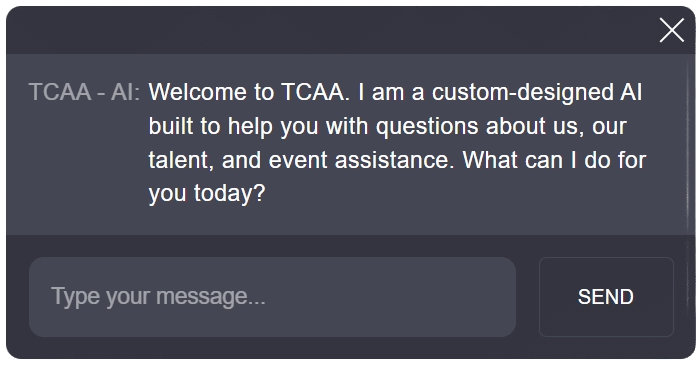In our fast-paced world of 2024, agility is more than just a term—it’s a lifeline. Organizations seeking to not only survive but thrive amid uncertainty and constant evolution must adopt an agile approach. This mindset promotes an environment ripe for adaptability and innovation, allowing teams to swiftly respond to shifting circumstances and market demands. But what does it mean to embody agility in this modern age? Let’s dive into the top seven elements integral to cultivating an agile mindset across various sectors, including technology, hospitality, and beyond.
Top 7 Elements of an Agile Mindset for Rapid Change

1. Agile Methodologies: A Framework for Flexibility
First and foremost, let’s understand that agility isn’t just a buzzword—it’s a strategic framework for flexibility. Companies like Spotify have embraced the Agile methodology not just in software development, but throughout project management. This framework allows teams to adjust quickly based on stakeholder feedback, fostering a cycle of improvement. The iterative nature of this process ensures projects stay relevant in an ever-changing marketplace.
Being agile means being ready for whatever comes next. As the world spins more rapidly, organizations that can pivot are the ones that stay ahead of the curve. It’s about making smart, quick decisions, rather than getting bogged down in elaborate plans.
2. Virtual Collaboration: Enhancing Team Dynamics
With remote and hybrid work taking the lead in 2024, virtual collaboration tools have become essential for maintaining agility. Platforms like Slack and Microsoft Teams are not just communication tools; they foster community among dispersed teams. These platforms enable companies such as Zoom to tackle challenges collectively, analyzing issues and rapidly generating innovative solutions.
The ability to connect in real-time provides teams with the support they need to adapt at lightning speed. Moreover, it allows for a seamless flow of ideas, encouraging team members to contribute from wherever they might be. In a world glued to screens, these digital spaces have become the breeding grounds for creativity.
3. Emotional and Cognitive Analytics: Understanding Team Dynamics
Incorporating emotional and cognitive analytics, organizations can assess how team members think and feel during projects. Using AI algorithms to analyze communication patterns or sentiment from virtual meetings can yield valuable insights. Google has led the charge by utilizing this strategy to foster inclusivity and spur innovation within its diverse workforce.
Understanding team dynamics is critical to successful collaboration. By analyzing how a team operates and responds to various stimuli, companies can adapt their strategies swiftly. This awareness helps create an environment where each individual feels valued and empowered, driving innovation forward.
4. The Reality of Change: Evolution is Constant
To be truly agile, organizations must accept that change is the only constant. The hospitality industry, with leaders like Marriott, showcases how agility helps navigate significant shifts in consumer expectations. During economic fluctuations, Marriott has quickly adjusted its offerings, such as revamping its loyalty program amid the pandemic to keep customers engaged.
This relentless evolution teaches organizations not just to react, but to anticipate changes. It’s about shifting focus to what customers need most and adjusting accordingly. Each change is not a setback but a stepping stone toward further growth.
5. Data-Driven Decision-Making: The Role of Algorithms
In an increasingly data-centric world, leveraging data for decision-making becomes vital. Algorithms that analyze consumer behavior help companies predict shifts in trends. For example, Netflix effectively uses its algorithms to not only recommend shows but also gauge audience reactions to new productions, tailoring offerings with pinpoint accuracy.
By adopting a data-driven mindset, organizations can assess performance proactively. When companies rely on real-time analytics, it empowers them to stay ahead of shifts in consumer demand and market variables. It’s a powerful combination of art and science that fuels innovation.
6. Logical Sequence: A Blueprint for Action
A logical sequence of actions in any agile process is crucial for strategic responses to change. Take Amazon, for instance; its model of continuous improvement has transformed logistics and distribution. Each step builds cohesively, enabling scaled learning that fuels innovation at every level.
When teams operate with a clear sequence, they’re better equipped to tackle challenges efficiently. It’s not just about having a plan; it’s about executing that plan thoughtfully, adapting as new information arises, and always focusing on the end goal.
7. Neuroscience of Innovation: The Brain’s Role
Delving into the intersection between neuroscience and agility reveals how understanding brain responses to stress and change can spark innovation. Imagine a metaphorical schizophrenia; recognizing and embracing conflicting ideas within an organization fosters a culture of creativity. This approach nurtures cognitive dissonance, often leading to groundbreaking ideas, especially visible in R&D departments like those at Tesla.
By leveraging insights from neuroscience, organizations can learn how to navigate stress and adversity with grace. A culture that embraces diverse thoughts not only promotes collective problem-solving but also turns challenges into opportunities for remarkable breakthroughs.

Innovative Strategies Beyond Agility
As organizations embark on mastering rapid change and innovation, they should embrace a mindset that transcends agility. The application of Aristotelian logic can enhance decision-making processes, helping teams address problems systematically and efficiently. This approach allows organizations to monitor cognitive responses continuously, ensuring they evolve strategies that keep them at the cutting edge of their industries.
In today’s landscape, agility equates to resilience and foresight. Companies opting for flexible, responsive approaches can better seize emerging opportunities. They evolve into dynamic ecosystems that are always learning and adapting. It’s clear that, in 2024, agility isn’t just an advantage; it’s essential for survival.
In conclusion, embracing an agile mindset equips organizations to navigate the complexities of rapid change effectively. Those willing to break free from rigid structures will unlock new realms of innovation, emerging not just as businesses but as pioneers in their industries. So, as leaders and teams, let’s commit to being agile and dare to innovate boldly!
Agile Insights: Fun Trivia and Interesting Facts
Agile Evolution
Did you know that the agile methodology dates back to 2001? It all started when a group of 17 software developers got together and produced the Agile Manifesto. This laid the groundwork for adaptive project management in software development. Interestingly enough, the first version of Scrum was inspired by a game of rugby, where teamwork and quick changes are key—much like in the workforce today! Just like the concept of closing timing in the mortgage industry can often shift unexpectedly, agile allows teams to pivot quickly to meet demands and avoid pitfalls.
Agile in Practice
The agile approach isn’t just limited to tech; it’s made its way into various fields, impacting everything from marketing strategies to education. For instance, Uc Santa cruz has adopted agile frameworks in their curriculum design to promote flexibility and responsiveness to student needs. This shift mirrors how businesses use customer relationship management systems to adapt to consumer preferences. Moreover, the growing interest in what drug is lean has got some individuals reflecting on how life changes post-adoption of agile—highlighting a broader conversation about adaptability in personal circumstances, such as Losing a parent in Your 30s, which can bring about a need for agility in coping mechanisms.
Agile Trivia and Records
Fun fact: agile practices have even influenced sports! Take the NFL, for example; players like Josh Allen of the Buffalo Bills have seen their gameplay evolve by employing agile strategies. His quick thinking and adaptability showcase the principles that agile advocates. And speaking of athletes, adopting agility isn’t just about quick moves; it involves a deep understanding of strategy, similar to how professionals pursue further education like a Phd to navigate their careers.
So, as we continue to embrace an agile mindset, let’s remember it’s not solely confined to business. It’s everywhere—from historical shifts like the French Revolution, which exemplifies rapid societal change, to even the unexpected evolution of trends like that catchy term sexy blonde. Embracing agility in our various pursuits can lead us to an innovative tomorrow!

What is the meaning of the word agile?
Agile refers to the ability to move quickly and easily, and in a project context, it means being able to adapt and respond to changes as they happen.
How do you explain agile?
Agile is a way of managing projects that emphasizes fast feedback and constant improvement rather than relying on strict steps or timelines. It’s all about getting things done while being flexible.
What is meant by being agile?
Being agile means being open to change and being able to shift directions easily when new information comes to light or when things don’t go as planned.
What is agile in work?
In work, agile is about teams collaborating closely and changing their plans as needed to meet project goals, making adjustments based on feedback and results from each stage of the project.
What agile really means?
Agile really means embodying a flexible mindset and being willing to adapt to new circumstances while focusing on delivering value.
Is agile a good thing?
Agile is generally seen as a good thing because it helps teams work more effectively and respond to changes faster, improving overall productivity and satisfaction.
What is Agile in your own words?
In my own words, agile is about being quick on your feet and adjusting your approach based on what you learn along the way, rather than sticking rigidly to a plan.
What is an Agile mindset?
An Agile mindset is a way of thinking that embraces change and encourages ongoing learning and flexibility, focusing on delivering value through collaboration.
How do you explain Agile in an interview?
In an interview, you could explain Agile as a flexible approach to project management that focuses on short cycles of work, ongoing feedback, and the ability to adapt to change quickly.
What is agile in layman terms?
In simple terms, agile means being adaptable and responsive, ready to change plans when needed based on what’s happening in a project.
How is an agile person?
An agile person is someone who can think quickly, adjust their actions based on changing conditions, and work well with others to achieve goals.
What is agile example?
A common example of agile is using the Scrum method, where teams work in short sprints to build and revise a product based on user feedback.
What is the main purpose of agile?
The main purpose of agile is to deliver maximum value to users while being able to adapt and respond to changing requirements throughout a project.
How do you stay agile at work?
To stay agile at work, it’s helpful to regularly check in on progress, remain open to feedback, and be willing to shift priorities when necessary.
What are the 4 principles of agile?
The four principles of agile, as outlined in the Agile Manifesto, include valuing individuals and interactions, working software, customer collaboration, and responding to change.
What does it mean when someone is agile?
When someone is agile, it means they can easily adjust to new situations or challenges, and they have a quick and flexible approach to work.
What is agile in your own words?
In my own words, agile means being nimble and responsive, able to change course based on what you learn and what’s required in a project.
Which is the closest synonym for the word agile?
A good synonym for agile would be “nimble,” which also captures the idea of being quick and adaptable.
What is agile method in simple words?
The agile method, in simple words, is a way of managing projects that focuses on flexibility, quick feedback, and adapting to change while delivering value continuously.



















